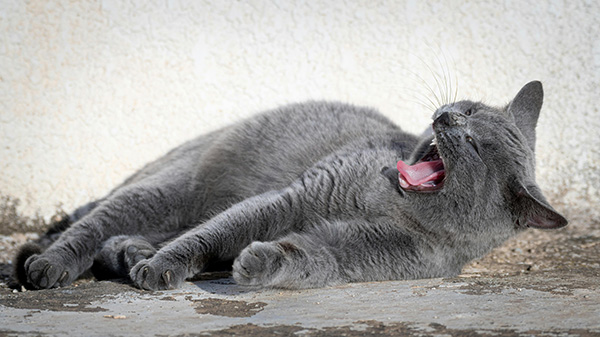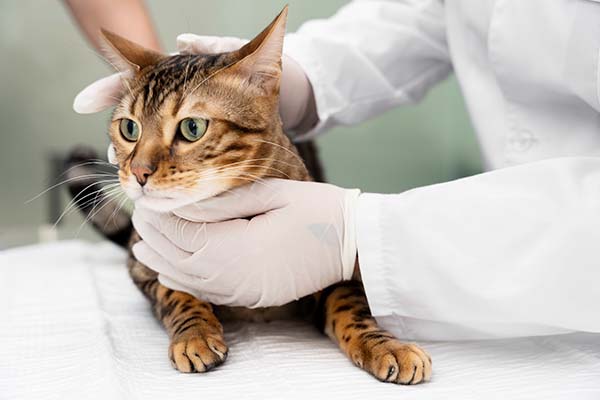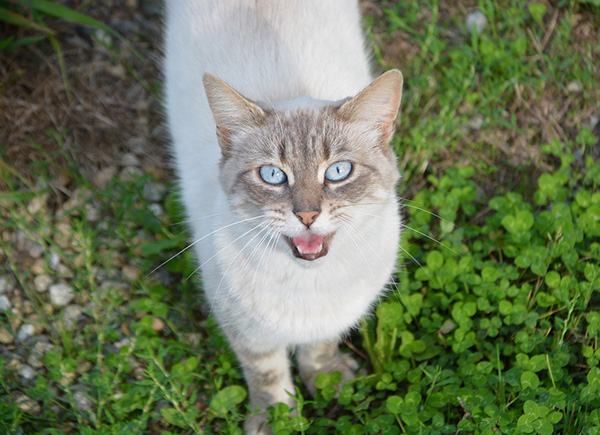Cat dental disease is more common than many pet owners realize, affecting up to 70% of cats as they age. Dental disease in cats, including periodontal disease and tooth resorption, can lead to severe mouth pain, gum disease, and systemic diseases if left untreated. Plaque forms on a cat's teeth and hardens into tartar, damaging tooth root surfaces and leading to conditions like severe gingivitis and tooth decay.
Below, we will share everything a pet parent needs to know about cat dental disease.
What is Cat Dental Disease?
Cat dental disease, or feline dental disease, refers to a range of oral health issues that impact a cat’s gums, teeth, and surrounding tissues. These conditions often begin with minor symptoms like dental plaque and bad breath but can progress to painful, severe cases that impact a cat’s ability to eat, leading to a decline in overall health. Gingivitis, periodontal disease, and tooth resorption are common dental issues in cats. Without appropriate dental care and regular checkups, these issues can worsen, resulting in loose teeth, fractured teeth, or even tooth loss, all of which significantly affect a cat’s quality of life.
Causes of Cat Dental Disease

The primary cause of dental disease in cats is plaque buildup. Plaque naturally builds up on a cat's teeth and, if not cleaned, can harden into tartar, causing inflammation and infection. Poor oral hygiene and diet can exacerbate plaque buildup, accelerating the progression of dental disease. Other underlying health issues, such as kidney disease or diabetes, may also increase the risk of dental issues, as they can weaken a cat’s immune response and make them more susceptible to infections.
Symptoms of Cat Dental Disease
Identifying the signs of dental disease in cats is crucial for early treatment and ensuring their comfort and well-being. Dental disease in cats can range from mild gingivitis to severe periodontal disease, affecting the cat's teeth, gums, and overall quality of life. Here are the common and advanced symptoms to watch for:
Bad Breath (Halitosis): One of the earliest and most noticeable signs of dental disease in cats is bad breath. As plaque and tartar accumulate on the cat’s teeth, bacteria release odor, leading to persistent halitosis. This odor is often due to the buildup of disease-causing bacteria on tooth surfaces and along the gum line.
Excessive Drooling: Cats experiencing mouth pain or gum inflammation from dental disease often drool more than usual. This can result from discomfort around affected teeth or tooth root irritation. If gum disease is present, the drool may sometimes be tinged with blood.
Red or Bleeding Gums: Inflammation and infection can cause red, swollen, or bleeding gums, indicating the onset of gingivitis. This can progress to severe gingivitis and periodontal disease if untreated, exposing tooth root surfaces and potentially leading to tooth root abscesses.
Swollen or Receding Gums: Swelling or recession of the gums exposes the roots of a cat’s teeth, making them more susceptible to pain, infection, and eventual tooth loss. Receding gums also signal an increased risk of tooth resorption, where the body begins breaking down and absorbing the tooth, causing significant pain.
Pawing at the Mouth: Cats may paw at their mouth when experiencing discomfort or pain in certain areas. This behavior often signals a cat’s attempt to relieve discomfort from loose teeth, tooth decay, or gum inflammation. Pawing may also result from the irritation of cervical line lesions, which form along the gum line.
Difficulty Eating or Dropping Food: Dental pain often makes it difficult for cats to eat, leading to food dropping, reluctance to chew, and a preference for soft foods. Tooth crowding, fractured teeth, or other structural issues in the mouth may contribute to this, as chewing becomes uncomfortable.
Weight Loss and Reduced Appetite: As eating becomes more painful, cats may stop eating altogether, resulting in weight loss. This can impact the cat's immune response and increase vulnerability to other infectious or systemic diseases, further exacerbating health issues.
Tooth Resorption and Fractured Teeth: Tooth resorption is a painful condition where one or more teeth start to break down and dissolve, often from the inside out. This condition, seen in many aging cats, results in fractured teeth, pain, and an eventual need for extracting the entire tooth to prevent further discomfort.
Loose Teeth: In advanced stages of feline dental disease, weakened tooth support structures lead to loose teeth that may fall out or require extraction. Loose teeth indicate serious damage to the gum line and bone structure, often due to untreated gingivitis or periodontal disease.
Obvious Discomfort and Behavioral Changes: Cats with severe oral inflammation may stop eating, become less active, or isolate themselves due to chronic pain. The combination of mouth pain, bleeding gums, and other symptoms can significantly affect the cat's quality of life.
How to Diagnose

Diagnosing dental disease in cats requires a thorough veterinary exam. The vet inspects the cat’s mouth, checking gums, teeth, and tooth surfaces for clinical signs of common dental diseases like gum disease and severe gingivitis. Sedation and dental X-rays may be needed to uncover hidden issues, such as tooth resorption in cats, cervical line lesions, or bone loss affecting lower teeth. X-rays reveal problems below the gum line, allowing for early treatment of affected teeth. Early detection and continued oral hygiene help prevent advanced dental problems, supporting the cat’s immune system and reducing the cat’s pain and discomfort over time.
Treatment of Cat Dental Disease
Treatment for dental disease in cats varies based on severity, with options ranging from preventive care to surgical intervention:
Professional Dental Cleaning: Early stages of cat dental disease, such as mild gingivitis, are managed through professional cleanings that remove plaque and tartar from tooth surfaces and along the gum line.
Antibiotics and Anti-Inflammatory Medications: For advanced dental diseases in cats, like periodontal disease or untreated gingivitis, antibiotics may be prescribed to target disease-causing bacteria, while anti-inflammatory medications help reduce the cat’s pain and oral inflammation.
Tooth Brushing and Dental Products: Regular tooth brushing with cat-specific products, like plaque prevention gel or only tooth gel, helps prevent gingivitis and maintain dental health. Steer clear of human toothpaste, as it can be harmful to cats.
Tooth Extraction: Severe cases involving extensive tooth resorption or deep periodontal disease may require extracting affected teeth to alleviate discomfort and stop disease progression. Tooth extractions are often recommended when there is significant pain or if X-rays reveal damage below the gum line.
Oral Rinse and Continued Care: Post-treatment, maintaining regular oral hygiene with dental products and oral rinse can help prevent gum disease and keep the cat’s teeth healthy.
Prevention of Cat Dental Disease
Preventing dental disease in cats is far easier than treating advanced issues like periodontal disease or tooth resorption. Regular at-home care, such as tooth brushing with veterinary-approved toothpaste, helps remove plaque and reduce gum disease risk. Plaque prevention gel can further protect cats' teeth and gums, minimizing the buildup of rough surfaces where bacteria thrive. Dental treats and diets designed to support oral health also help prevent dental problems by cleaning tooth surfaces.
Annual veterinary checkups are essential for identifying early clinical signs, such as severe gingivitis or abnormally positioned teeth. Veterinarians may use dental X-rays to check for hidden issues, like tooth resorption in cats or cervical line lesions. Professional cleanings and exams allow early intervention and help prevent the pain and complications associated with advanced dental diseases. By establishing consistent oral care, pet owners can support the cat's immune system, prevent gum disease, and maintain overall health as they age.
Most Common Types of Cat Dental Disease

Tartar and Plaque Buildup
Tartar and plaque buildup are among the most common dental diseases in cats. Plaque forms when bacteria from both the saliva and food particles accumulate on the tooth surface, leading to dental plaque. If left unchecked, plaque hardens into tartar, creating a rough surface on the cat's teeth that irritates the gums and promotes gum disease. This buildup, if untreated, can develop gingivitis and cause further dental problems, impacting a cat's mouth health. Treatment typically involves routine tooth brushing with only tooth gel approved by the Veterinary Oral Health Council and professional cleanings to prevent dental disease.
Gingivitis
Gingivitis is a frequent dental condition in cats, caused by accumulated plaque and tartar on the teeth. This gum inflammation causes red, swollen, and sometimes bleeding gums, leading to cat's pain and potential disease progression. Without treatment, gingivitis can escalate to periodontal disease, damaging the entire tooth structure and surrounding bone. Early intervention with tooth brushing, plaque prevention gel, and regular cleanings can prevent gingivitis and support the cat’s immune system in fighting harmful bacteria.
Periodontitis
Periodontitis is a more severe form of gingivitis that impacts the gums, periodontal ligaments, and jawbone. This condition causes tooth loosening, pain, and potential tooth loss, often requiring deep cleaning and antibiotics. Severe cases may necessitate extracting affected teeth to relieve cat's pain. Dental X-rays help detect hidden issues like cervical line lesions or tooth resorption. Regular oral care, including daily brushing, helps prevent this advanced form of dental disease in cats, preserving their dental health.
Stomatitis (FCGS)
Feline Chronic Gingivostomatitis (FCGS) is a painful inflammatory disorder that impacts cats' gums and other oral tissues. Cats with stomatitis experience extreme discomfort, often exhibiting clinical signs such as drooling, reduced appetite, and difficulty eating. Severe oral inflammation can cause obvious discomfort, prompting some cats to stop eating altogether. The underlying cause of stomatitis is not entirely understood, though an overreaction of the cat's immune system to dental plaque or infectious or systemic diseases may contribute. Treatment often requires extracting teeth to reduce inflammation, especially if multiple or abnormally positioned teeth worsen the condition. Long-term management may include oral rinse and specialized diet adjustments to maintain feline health.
Tooth Resorption
Tooth resorption is a common yet poorly understood condition in which a cat’s tooth structure begins to break down, leading to pain and eventual tooth loss. Symptoms include difficulty eating, drooling, and visible damage to the teeth. Treatment typically involves removing the affected tooth to alleviate pain and prevent additional resorption.
